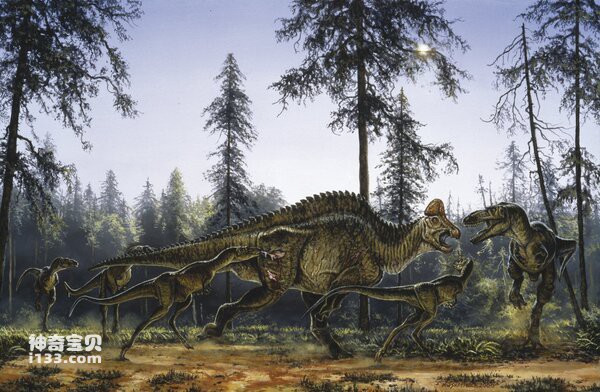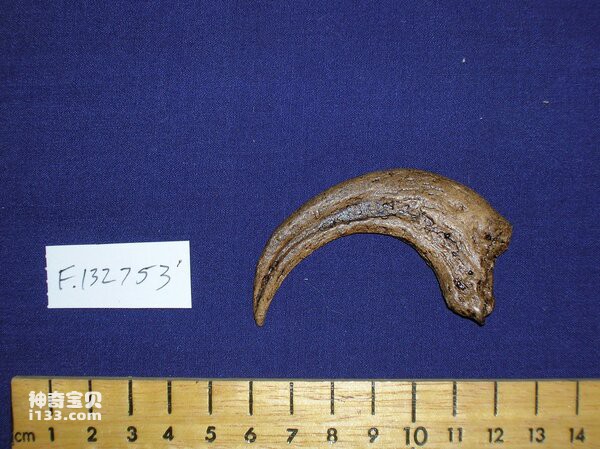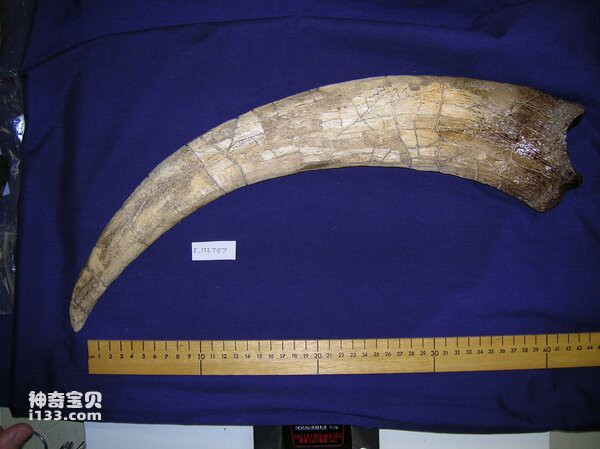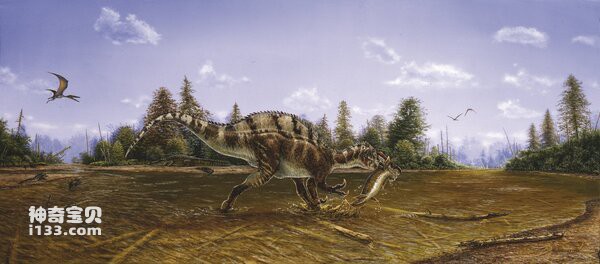The ability to outwit other animals requires a combination of strength, speed, balance, and weapons. Most theropods relied on these skills and assets to find food, although some theropods appear to have adapted to a filter-feeding or herbivorous life.
Most theropods have the same general body structure—a strong, lightweight frame, two relatively long legs, a stiff balancing tail, and sharp claws—for hunting.
However, theropods also varied in body size, arm length, skull structure, and claw shape. This suggests they use different methods to subdue their prey. By taking a closer look at these features and comparing them to those of modern predators, we can discover what these methods might have been.

Living predators vary greatly in size and weaponry, and use different techniques to attack their prey. Some of these technologies may be similar to those used by dinosaurs.
Examples include:
Cheetah: Destructive speed and physical agility
Lion: Hunt in packs using stalking tactics and the element of surprise before using speed and strength
Crocodile: Mainly relies on ambush and physical strength, with huge bite pressure and huge teeth
Eagle: Powerful talons, excellent eyesight, speed and agility
It's important to remember that most living carnivores prefer to hunt old, sick, or young animals because these are the easiest and safest prey options. This suggests that large theropods may not prey on large, healthy adult herbivores. Fossil evidence supports this, as the remains of juvenile dinosaurs have been found with bite marks, or food preserved in the guts of larger theropods.
Some theropods, such as Albertosaurus and Giganotosaurus, may have attacked using a "bite and slice" technique rather than killing outright. This may have helped them hunt large sauropods.
Coelophysis bori was a small theropod dinosaur with a slender, lightweight skeleton and a very long tail for increased attack speed and agility. The mass burial of more than a dozen of these dinosaurs suggests they may have lived in groups.
Sinornithosaurus was an active and agile species that probably hunted in groups. It was probably adapted for jumping because its stiff tail acted as a counterweight, allowing precise positioning and release of its powerful claws. It's hard to say whether this helps attack prey or jump between branches.
The Mongol raptor was a small and agile carnivore. A fossil specimen in Mongolia preserves an individual fighting its presumed prey, Protoceratops. There is no evidence that it hunted in packs, although some of its close relatives did so. The species has many bird-like features, including long arms, feathers, and wishbones. It also has a specialized claw on its second toe that can be used to anchor the claw to the ground when walking. Such claws may have been used to impale or grab prey.
Tyrannosaurus rex usually had a strong skull, huge jaws, and a bulky body. These may help cope with the impact of struggling prey and provide enough force to crush bones. However, the body of Alioramus altai, a tyrannosaurus from Mongolia, is different from other members of the family. It has a slender head, a weak jaw, and a slender and lightweight body. These characteristics are more suitable for hunting smaller prey, using speed instead of brute force.

Utahraptor, Velociraptor, and Deinonychus all had specialized second toes (the innermost toes that touch the ground) with a giant claw for killing prey. This toe has a joint that allows it to move in a wide arc, providing the claw with additional downward attack power. While most scientists believe this specialized claw was used to deliver a fatal blow, some believe it functioned more like a grappling hook and gripped prey.

Crocodile lizards have long forelimbs and curved claws. They were adapted for scooping fish from the water into their mouths, probably as some bears do today. Dilophosaurus also had long arms and strong claws, which it likely used to help capture prey.
Another theropod that probably used long forelimbs and claws to capture food was Bambiraptor. It had opposing first and third fingers that allowed it to grasp small prey - an unusual feature seen only in a few other dinosaurs.
Allosaurus had large, powerful claws on its hands and feet that might have grabbed or subdued its prey as it used its jaws and teeth to kill it. These claws are typical of large theropod dinosaurs.
Some large theropods, such as Carnotaurus and Tyrannosaurus rex, had large claws but short arms that did not reach their mouths. These forelimbs may be small, but they are very muscular.

The theropods described here have unusual features that suggest they did not stalk and attack live prey.
Therizinosaurus was a theropod with impressive claws that looked savage but were probably used to strip vegetation, or tear apart termite mounds like echidnas and monitor lizards today. Therizinosaurus was large and heavy, suggesting it was quite slow and had only small teeth in its beak.
Ostrich-like, it has a beak-like lower jaw and no teeth. It probably fed on plants and insects like other ornithomimus.
Fossils of Ornithomimus have been found, with some of the soft tissue of its lower jaw preserved. These tissues are like those of some living waterbirds, such as flamingos, which eat by filtering food from the sediments of lakes and rivers.
There is evidence that the animal's footDinosauroids may have been smarter than their prey. Their brain casts are typically twice as large as those of comparably sized herbivores
animal tags: Dinosaur
We created this article in conjunction with AI technology, then made sure it was fact-checked and edited by a Animals Top editor.